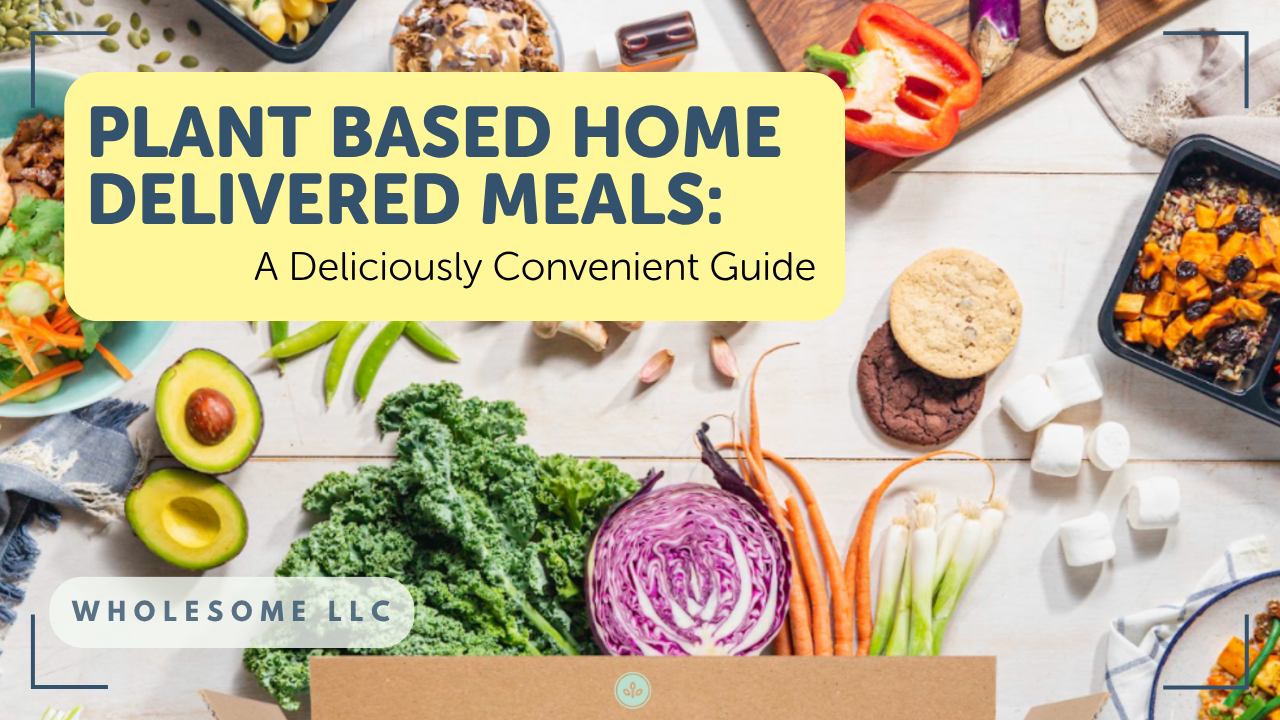The Wholesome Journey - Group Nutrition Coaching Program
Mentorship Program, 1:1 Nutrition Coaching with Alison
What do you want to learn more about?
Program Login
Podcast Features
January 19, 2019
Alison Tierney, MS, RD, CD, CSO
Alison is a registered dietitian, board-certified in oncology nutrition, and a cancer thriver. Her expertise in oncology nutrition and personal experience with her own cancer diagnosis and its treatment provide her with the unique perspective of being able to relate to her clients on an entirely different level. Her content is consistently focused on evidence-based guidelines and seeks to increase the awareness of the power of nutrition to complement traditional cancer therapies.
- Alison Tierney, MS, RD, CD, CSO
- Alison Tierney, MS, RD, CD, CSO
- Alison Tierney, MS, RD, CD, CSO
- Alison Tierney, MS, RD, CD, CSO
- Alison Tierney, MS, RD, CD, CSO
- Alison Tierney, MS, RD, CD, CSO
- Alison Tierney, MS, RD, CD, CSO
- Alison Tierney, MS, RD, CD, CSO
- Alison Tierney, MS, RD, CD, CSO
- Alison Tierney, MS, RD, CD, CSO
- Alison Tierney, MS, RD, CD, CSO
- Alison Tierney, MS, RD, CD, CSO
Today I want to share my 5 tips for saving money on groceries. Spoiler alert, none of the tips is “stick to a budget”. Anyone trying to save money knows budget is key, right?
How do I know these tips work? I am no Dave Ramsey or Suze Orman. But I take very close attention to my money. I keep track of every. single. penny.
Let me be clear. My financial advisor has already told me that I am slightly obsessive. I have a P&L (profit and loss) statement for our household and I can tell you exactly how much money we spent on Jeff’s haircuts vs. Lauren’s haircuts. #nerdalert
And since I love numbers, I can tell you exactly how much I saved on food between 2017 and 2018.

We spent 7% less on groceries and 9.5% less on dining out in 2018 vs. 2017*.
*I am not sharing the real dollar amounts here, because there is no need to get tripped up on how much I spend vs. you.
7% doesn’t sound like a lot?
Let’s put the math to work. The average household spends $4,049 for food at home and $3,145 for food away from home. (Reported by the U.S. Bureau of Labor Statistics) If those were my numbers, I would have saved $283 for groceries and $296 for eating out (a total of $576).
I don’t know about you, but I’ll take that $576 and put in my standup paddleboard savings fund!**
**(If you have one, please comment on what kind you have and if you love it. Clearly, I am in the market.)
Did I convince you to at least read my tips? Okay, good.
#1 Buy WHOLE food whenever you can
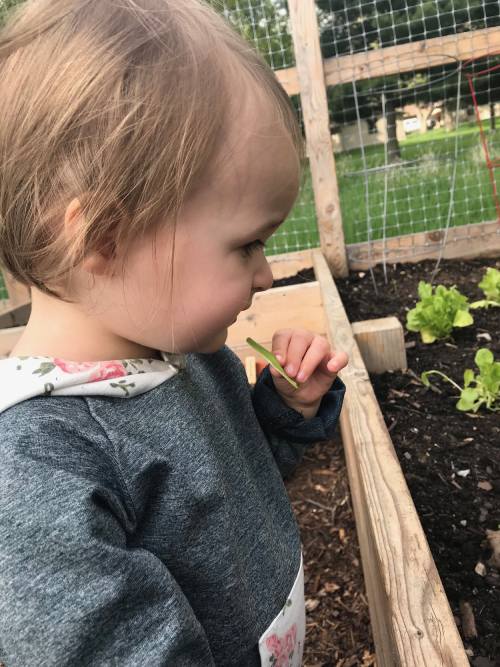
When eating a plant-based diet, it can be super easy to buy fancy granola, protein bars, pre-washed and packaged fruits veggies, etc.
Take for instance the pre-packaged Sweet Butter lettuce my husband used to buy. At my local grocery store, it is $3.49 for 6 ounces. But I can usually buy Boston lettuce for $1.99 a pound (16 ounces). Granted, you have to take it home wash it and cut it. Seriously, buy a salad spinner and take 2 minutes to prep it. It will save you so much money in the long run!
Do you have kids? Make it fun! My niece LOVES playing with the salad spinner. Plus, the more you expose children to vegetables, the better chance they will try them one day.
Overall, focus on whole foods you get to pick yourself.
#2 Know when to NOT buy organic
A lot of people assume I eat 100% organic. It’s definitely not true. Remember how I pay attention to every single penny? Buying everything organic would break the bank!
If the price isn’t ridiculous (i.e. $5.00 carton of organic strawberries), I’ll buy organic produce that isn’t on the dirty dozen list.
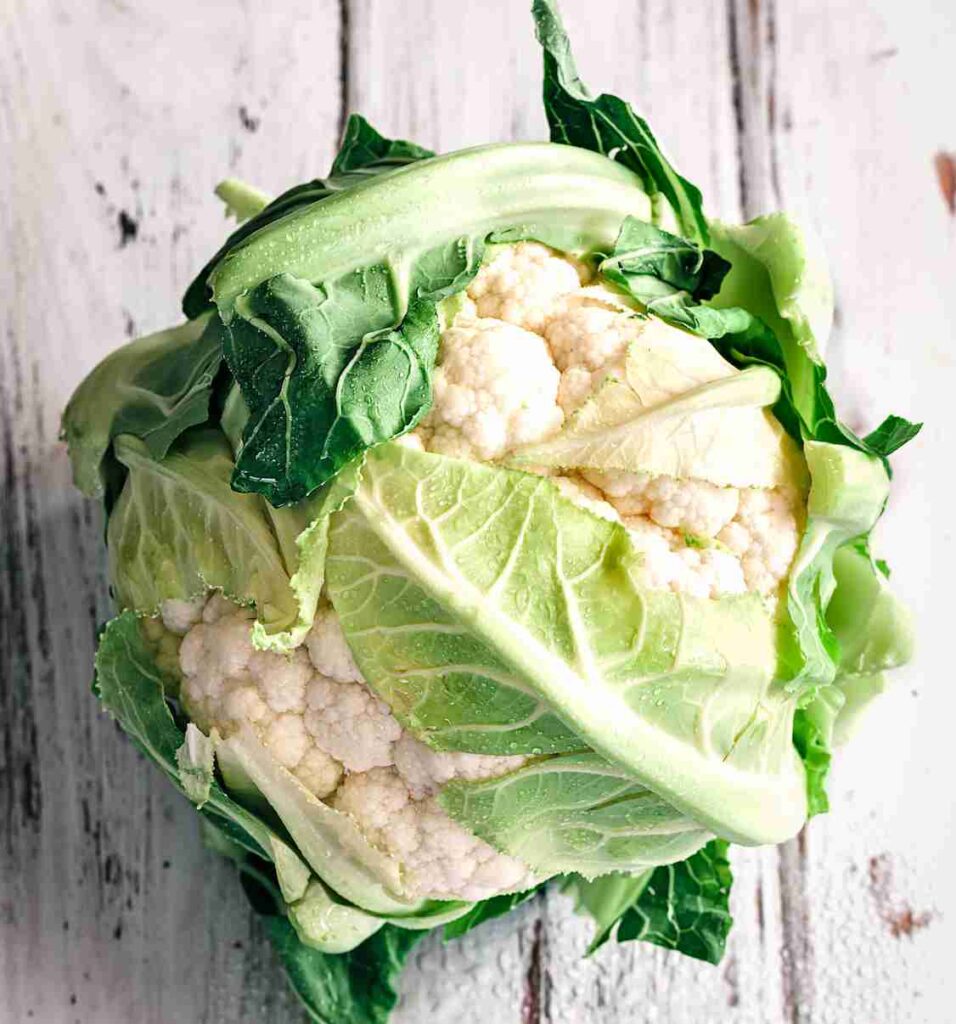
What is the dirty dozen? It’s a list of the top 12 produce items found to have the most pesticide residue. The Environmental Working Group (EWG) comes out with an update every year.
They also have the clean 15. The 15 produce items found to have the least amount of pesticide residue. These are the items I won’t buy organic (unless it’s the same exact prices as the conventional).
Those include:
- Avocados
- Onions
- Cauliflower
- Broccoli
Want our Dirty Dozen and Clean 15 cheat sheet?
#3 Always use coupons
When I say coupons, most people think I am some kind of extreme couponer. I am definitely not. Because for me, time is money. I’ll spend maybe ten minutes on coupons, not hours.
There are a variety of coupons on use:
Digital Store Coupons
- Before I even walk into the grocery store I am scrolling my grocer’s app to see what is on sale.
- When it’s time to check out I just plug in my phone number and all the coupons automatically ring up!
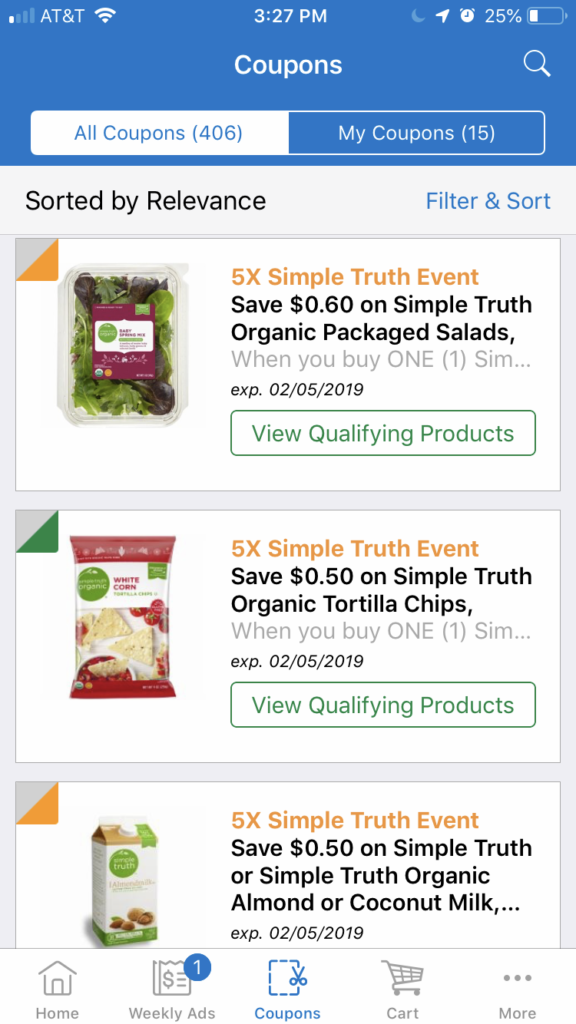
Coupon Apps
-
- This app has discounts for not only grocery stores but also Wal-Mart, Amazon, etc.
- Simply ‘Redeem’ the offer on the app and then upload your receipt when purchased. The cash will be added to your account!
-
- You can filter by store or by category.
- Simply ‘Redeem’ the offer and then upload your receipt when purchased. The cash will be added to your account.
- Want to receive money just for signing up? Use our refer a friend link!
-
Good ol’ Paper Coupons
- Like a lot of people my age, I don’t get the newspaper. But I still find coupons!
Visit your favorite brands’ website and see if they offer any coupons you can print out.
- I get coupons emailed to me from Silk from time to time.
#4 Always compare prices per ounce
When trying to decide which brand to buy, always let the cost per ounce make your decision. Take for instance whole wheat pasta:

The clear winner in this example the Simple Truth Organic box of pasta. Look how much you save!
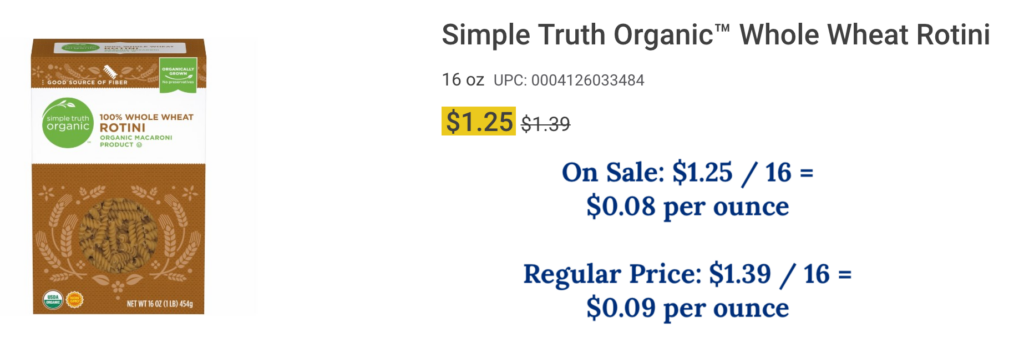
#5 Thrive Market
I use Thrive Market for items that are hard to find or more expensive at the standard grocery store. I put all of the details in earlier post. Read this if you are interested in learning more about Thrive Market.
Bonus Tip
Remember your reusable bags!
Some grocery stores will actually give you a discount if you are using reusable bags. In the past, my grocery store gave me a ten cent discount for every reusable bag I used. Now, they give fuel points. Some months, we have saved $0.70/gallon! You better believe we wait until Jeff’s truck is almost empty to take advantage!
A friend in California told me that stores CHARGE you for the bags. Now, that is a good way to remember to always keep them in your car!
I hope these tips helped! Do you have another awesome money saving tips? Tell us below in the comments!
❤️l a u r e n
How to Save Money on Groceries
Featured Articles
Wholesome LLC is not a medical practice, and its employees cannot offer medical advice. This website provides educational information but it is not a substitute for medical advice from a licensed medical professional who is familiar with your particular facts and circumstances. The information contained on this website is not intended to diagnose, treat, or cure any disease and shall not be construed as medical advice. The information and education on this website is provided for you to use at your own discretion.
You can further review our disclaimer here.
Wholesome
About Alison
Courses & Programs
The Wholesome Journey
Free Resources
FAQs
Press & Media
Recipes
Blog
Contact Us
Shop
© 2025 Wholesome, LLC All rights reserved.
Privacy Policy
Terms of Use
Disclaimer
Mobile Terms of Service

